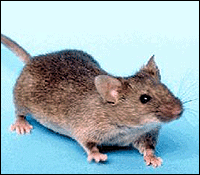CMDCMiracle
심혈관 대사질환센터
Cardiovascular and Metabolic Disease Center
Mitochondrial Research Affinity Collaboration-Laboratories & Engineering
0
Cardiovascular and Metabolic Disease Center
Mitochondrial Research Affinity Collaboration-Laboratories & Engineering
Home
> 0
Mouse Study Shows Gene Therapy Provides Temporary Protection from Radiation
- 작성자한진
- 작성일2006-08-13 14:14:45
- 조회수2415

Total406개
[ page4/28 ]
| No. | 제목 | 작성자 | 작성일 | 조회수 |
|---|---|---|---|---|
| 361 | 제 6회 논문연구계획서 발표대회: 최성우 학생 우수상 수상 첨부파일 2010.04.28 | 최성우 | 2010.04.28 | 2,859 |
| 360 | 다이어트 운동과 AMPK와의 관계 2010.04.20 | 고태희 | 2010.04.20 | 4,609 |
| 359 | 인슐린 생산 베타세포 재생 가능 2010.04.06 | 김형규 | 2010.04.06 | 3,453 |
| 358 | 축하합니다. 김나리 선생님: 2010 국제협력연구사업 선정 2010.03.05 | 한진 | 2010.03.05 | 3,581 |
| 357 | 동맥경화 촉진 유전자 찾아냈다...이화여대 오구택 교수 2010.02.25 | 허혜진 | 2010.02.25 | 3,293 |
| 356 | 국지적 항산화단백질 조절 메커니즘 규명...국가과학자 이서구 이화여대 교수 2010.02.25 | 허혜진 | 2010.02.25 | 3,295 |
| 355 | Prog Biophys Mol Biol논문 accept소식 2010.02.20 | 박원선 | 2010.02.20 | 2,662 |
| 354 | Pflugers Arch논문 accept소식 2010.02.17 | 박원선 | 2010.02.17 | 1,912 |
| 353 | 장미 박사님 질병관리본부 합격 2010.02.16 | 박원선 | 2010.02.16 | 2,976 |
| 352 | Seaons's Greetings to ALL 첨부파일 2010.01.04 | 한진 | 2010.01.04 | 1,663 |
| 351 | 안준석 제 5회 부산미래과학자상 수상자 선정 첨부파일 2009.12.02 | 한진 | 2009.12.02 | 4,677 |
| 350 | 인슐린 신호전달과 미토콘드리아 기능을 통합시키는 Foxo1 첨부파일 2009.11.24 | 홍다혜 | 2009.11.24 | 5,358 |
| 349 | 심혈관·대사질환 10대 주목 프로젝트 선정 2009.11.16 | 한진 | 2009.11.16 | 2,357 |
| 348 | JPS논문 accept소식 2009.11.06 | 박원선 | 2009.11.06 | 1,724 |
| 347 | Bone논문 accept소식 2009.11.05 | 박원선 | 2009.11.05 | 2,369 |



